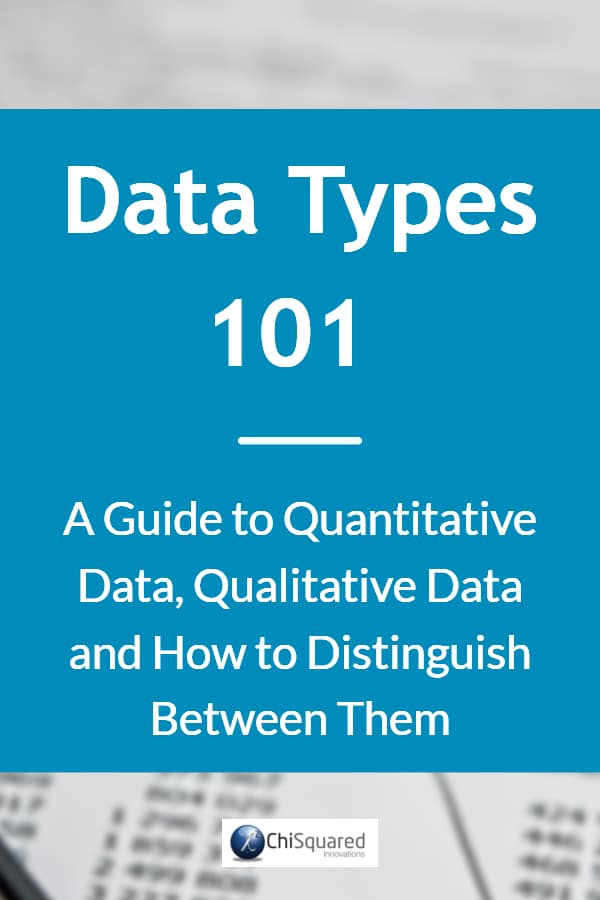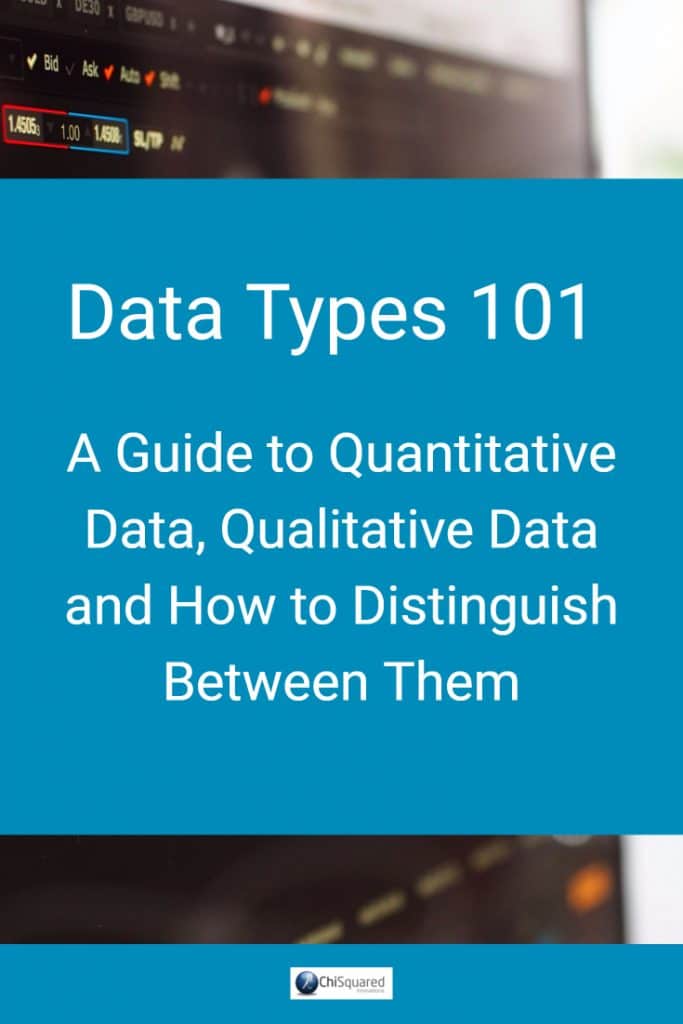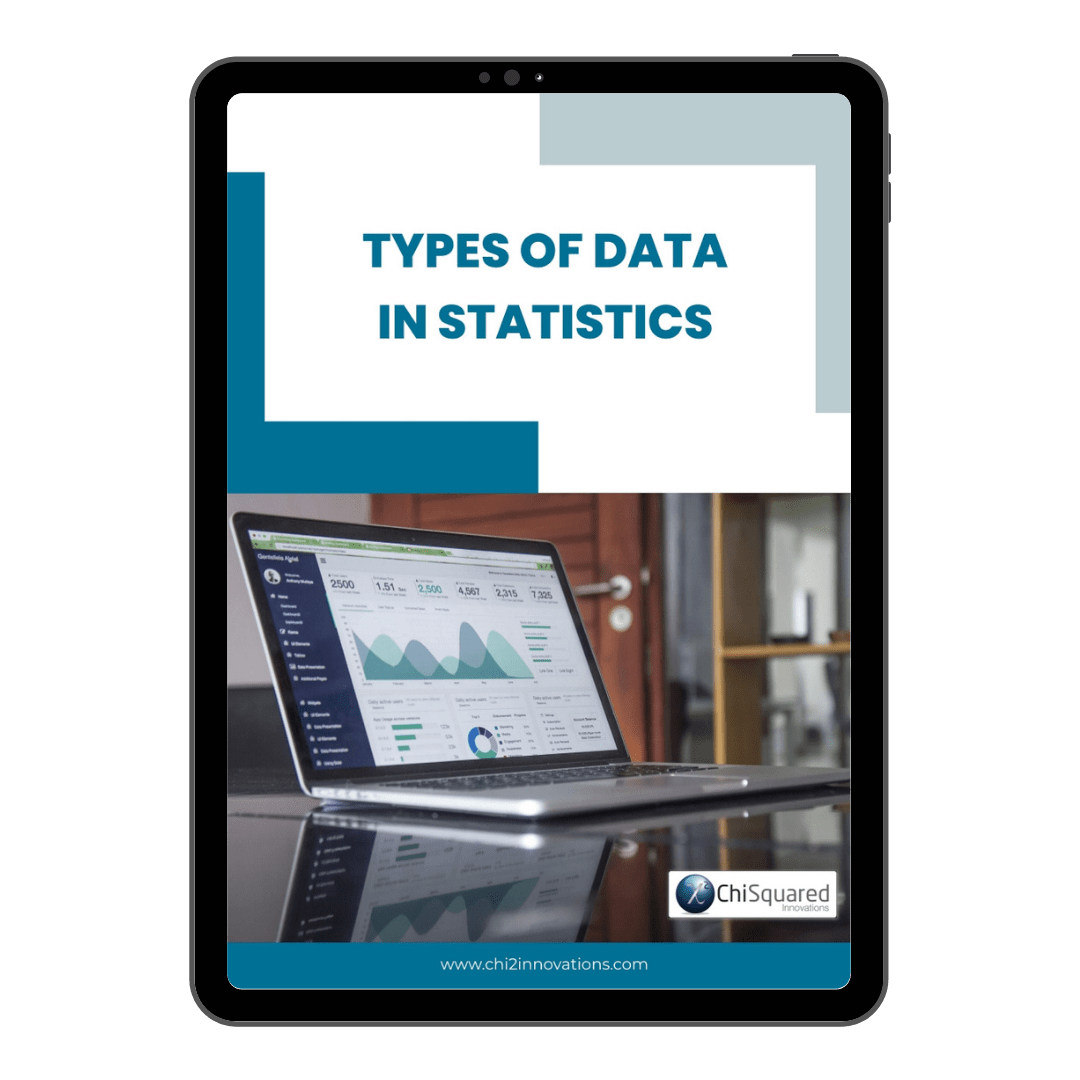Nominal data is one of only 4 types of data in statistics.
Do you know what they all are and what you can do with them?
If you want to know everything there is to know about Nominal data - definitions, examples, analysis and statistics - then you're in the right place.
When you're done here, you'll also want to read this post's sister articles on quantitative data and qualitative data, Ordinal data, Interval data and Ratio data.
For now, though, here is our guide to Nominal data and how to deal with them...
More...
Disclosure: we may earn an affiliate commission for purchases you make when using the links to products on this page. As an Amazon Affiliate we earn from qualifying purchases.
This post forms part of a series on the 4 types of data in statistics.
For more detail, choose from the options below:
4 Types of Data in Statistics: Introduction
What is Nominal Data?
If you want a simple definition of Nominal data, it would be this:
Nominal Data Definition
Nominal data is the simplest form of data, and is defined as data that is used for naming or labelling variables |
Nominal data is the statistical data type that has the following characteristics:
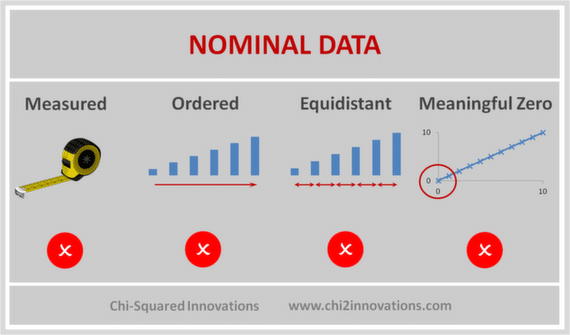
Nominal Data are observed, not measured, are unordered, non-equidistant and have no meaningful zero
We can differentiate between categories based only on their names, hence the title 'nominal' (from the Latin nomen, meaning 'name').
It it also worth noting that there is a sub-type of Nominal data with only 2 categories called 'dichotomous data'.
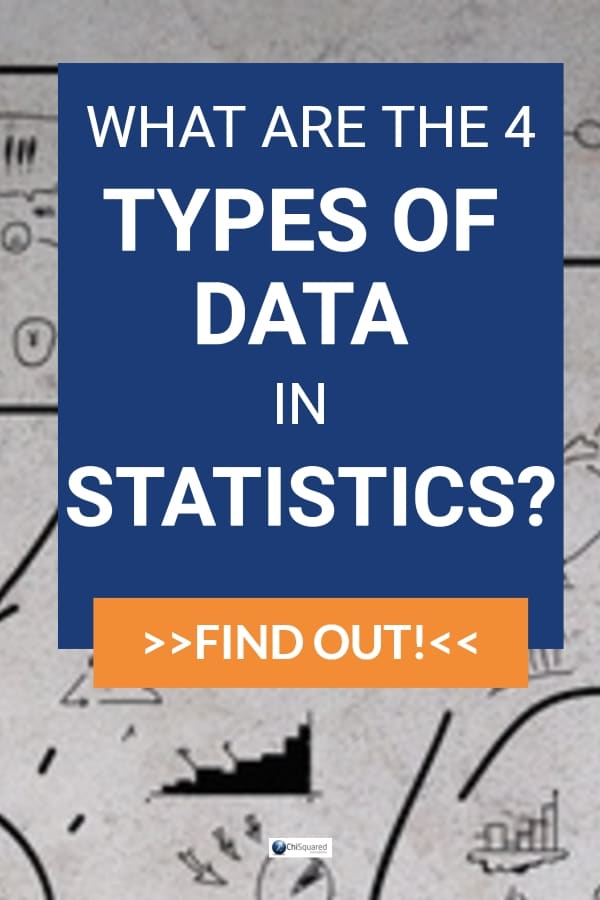

Pin it for later
Need to save this for later?
Pin it to your favourite board and you can get back to it when you're ready.
Nominal Data Examples
Examples of Nominal data include:
You can see that in each of these examples of Nominal data the categories have no order. See if you can spot in the above examples of Nominal data which of them are dichotomous data, and which are not.
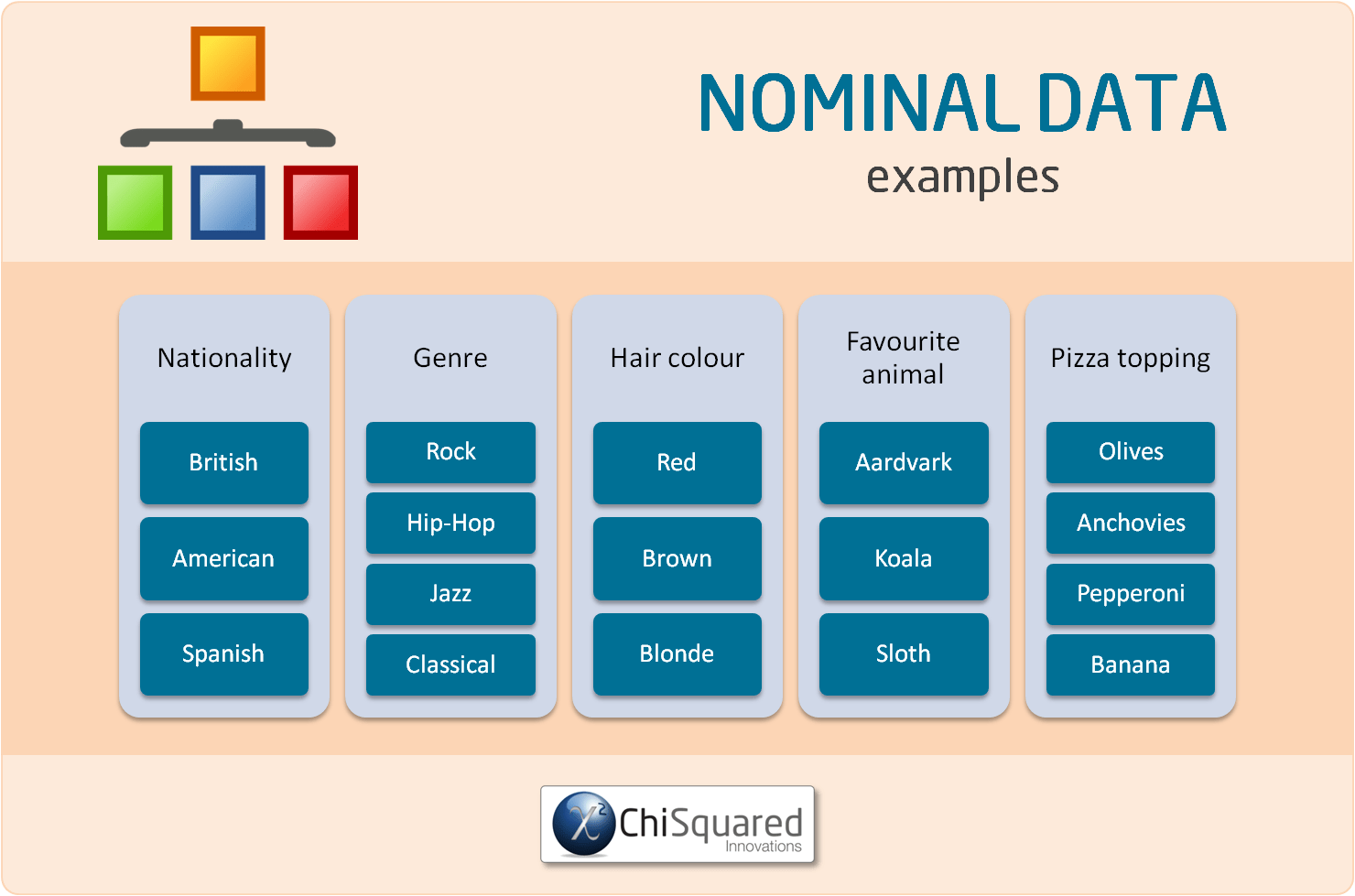
What Can You Calculate With Nominal Variables?
When Nominal data are used in analysis, they are called Nominal Variables, so that's what we'll call them from here.
The only mathematical or logical operations you can perform on Nominal variables is to say that an observation is (or is not) the same as another (equality or inequality), and you can use this information to group them together.
You can't order Nominal data, so you can't sort them. Neither can you do any mathematical operations because they are reserved for numerical data.
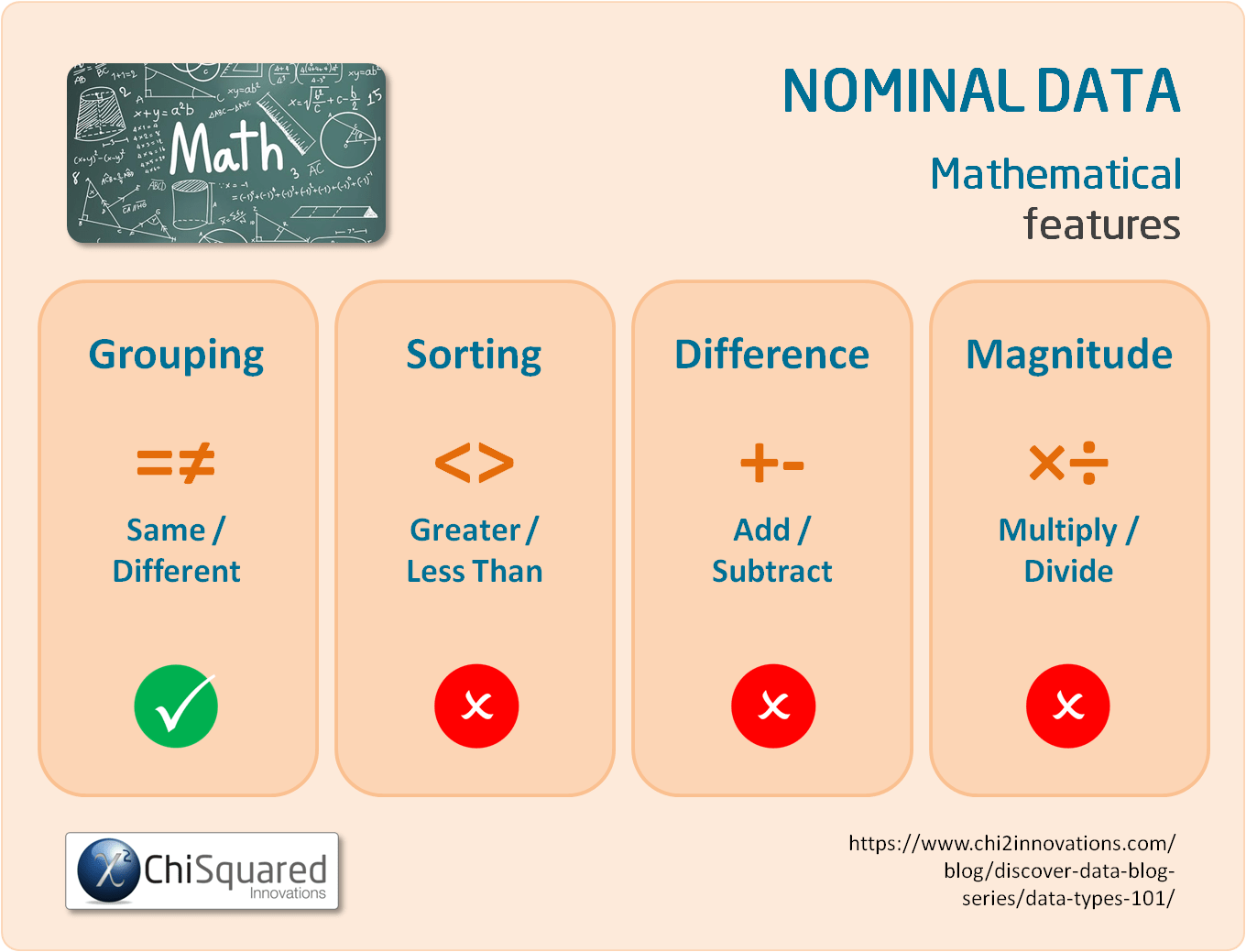
For example, you can group people according to their nationalities (British, American, Spanish, etc.), but you can't sort nationalities. The nations may have different sized populations, or different sized land masses but they are different data.
3 Simple Questions...
What's Stopping You Reaching
YOUR Data Ninja Potential?
Answer 3 questions and we'll recommend the best route to
super-charge your data career
What Descriptive Statistics Can You Do With Nominal Variables?
With Nominal variables you can calculate the following:
Other ways of finding the middle of the class, such as median or mean make no sense because ranking is meaningless for nominal variables.
Nominal Data - What Is It, And How Do You Analyse It? Everything You Need To Know (And More) @chi2innovations #dataanalytics #datatypes #statistics
For example, if we have a bag of red, blue and green marbles, let's work out the statistics:
Learn More About Statistics and Data with These Books:
What Data Visualisations Can You Do With Nominal Variables?
Since the only descriptive statistics you can do with Nominal variables are frequencies, proportions and percentages, the only ways to visualise these are with pie charts and bar charts.
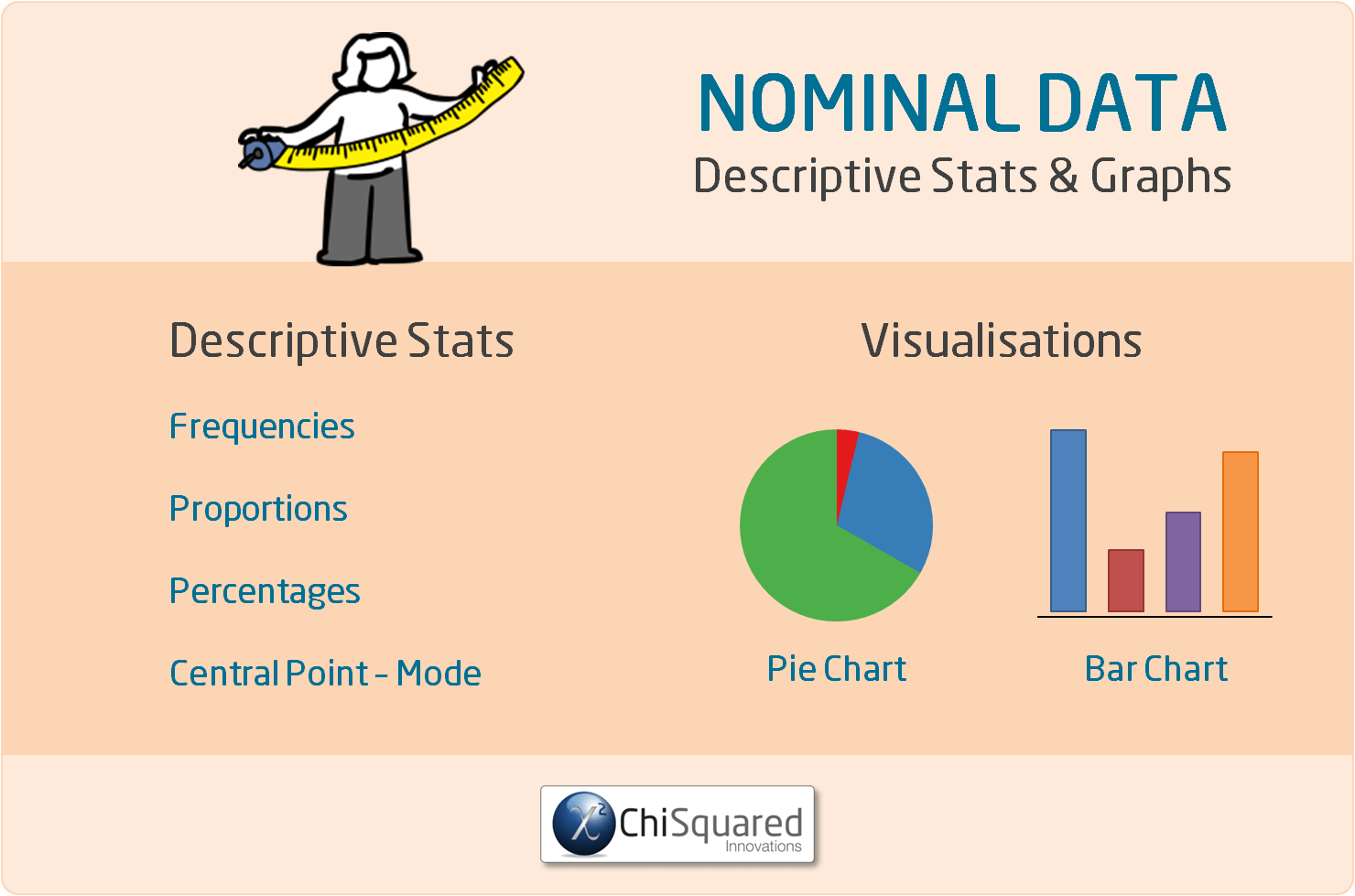
Nominal Data Make Great Dummy Variables!
So far we've talked about all the things that you can't do with Nominal data, but they have a super power - they make great dummy variables!
Analysing categorical data with various statistical tests can be difficult when they have more than 2 categories, and a common workaround is to transform them into dummy variables.
To create a dummy variable from a Nominal variable, all you do is pick a category of interest and code those data points as 1, then code all other data points as 0.
Technically, dummy variables are dichotomous, quantitative variables, and can take only 2 values, and typically, 1 represents the presence of a qualitative attribute, and 0 represents the absence.
For example, let's say you have the Nominal variable of 'Animal', for which the possible values are Pig, Sheep and Goat.
If you're interested in analysing the Pig data, then you code each instance of Pig as 1, and all other instances as 0.
Similarly with the Sheep and Goat data, like this:
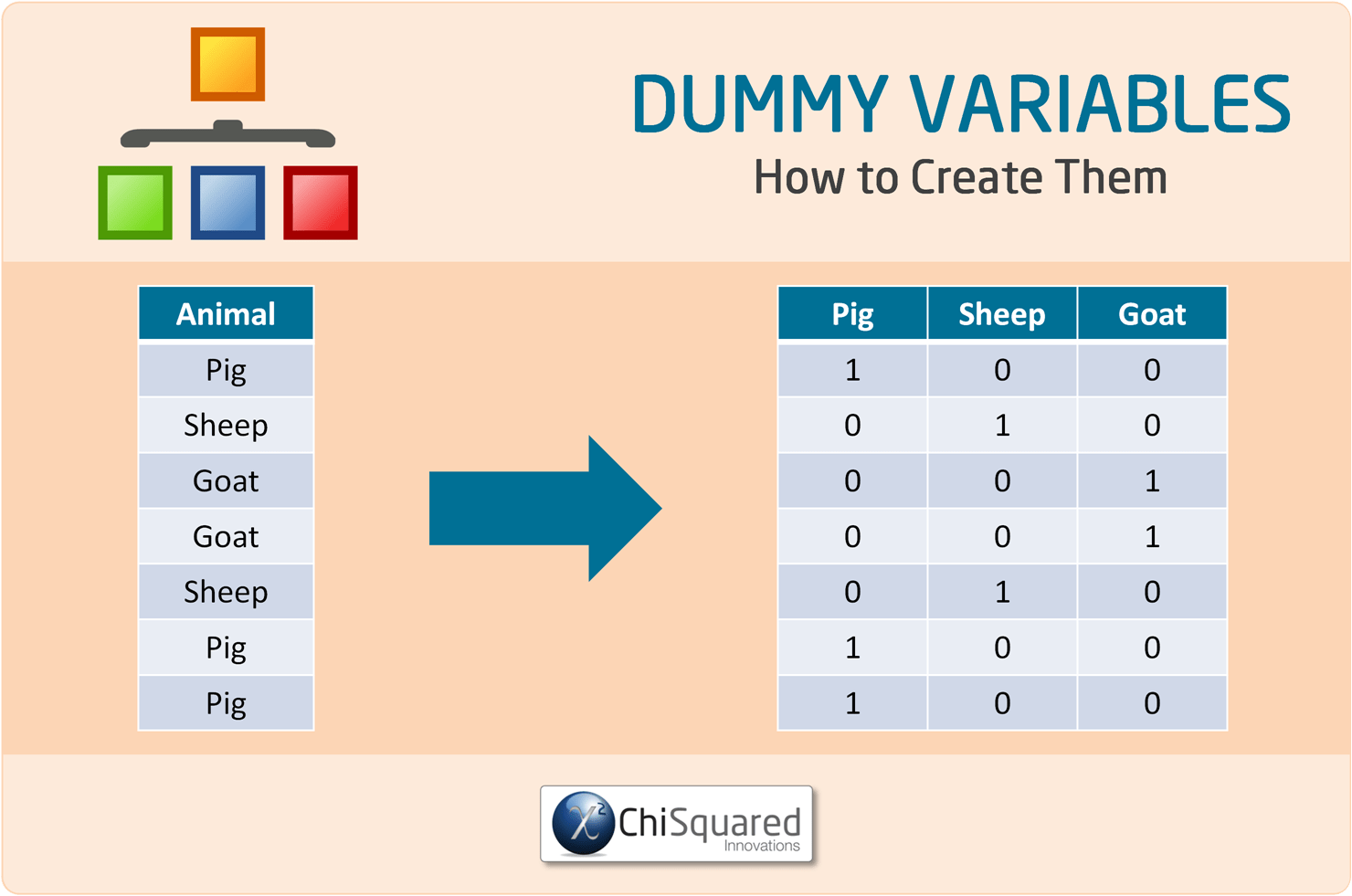
In this example, you might want to check whether your pigs are, on average, heavier than the other animals on your farm. You collect together the 'weight' data for all the instances where Pig=1 and calculate the mean weight. Then you do the same for all Pig=0 data. Now you know whether your pigs are heavier, and you can do the same analysis for your sheep and goats.
What Statistics Can You Do With Nominal Variables?
As well as the simpler descriptive statistics, Nominal variables can also be analysed using advanced statistical methods, such as in hypothesis testing.
In statistical hypothesis testing you compare one variable (or sometimes more) with another to test a hypothesis, a process which is known as 'pairwise testing', and will likely look something like this:
"If I (do this to this variable), then (this will happen to this other variable)".
Examples of this might be:
Nominal variables can be used in pairwise statistical hypothesis testing, either as one of the variables or both.
For example, you can use Nominal variables in a Fisher's Exact Test or a Chi-Squared Test, where it is tested against other categorical data.
You can also test Nominal variables against numerical data using a 2-sample t-test or an ANOVA.
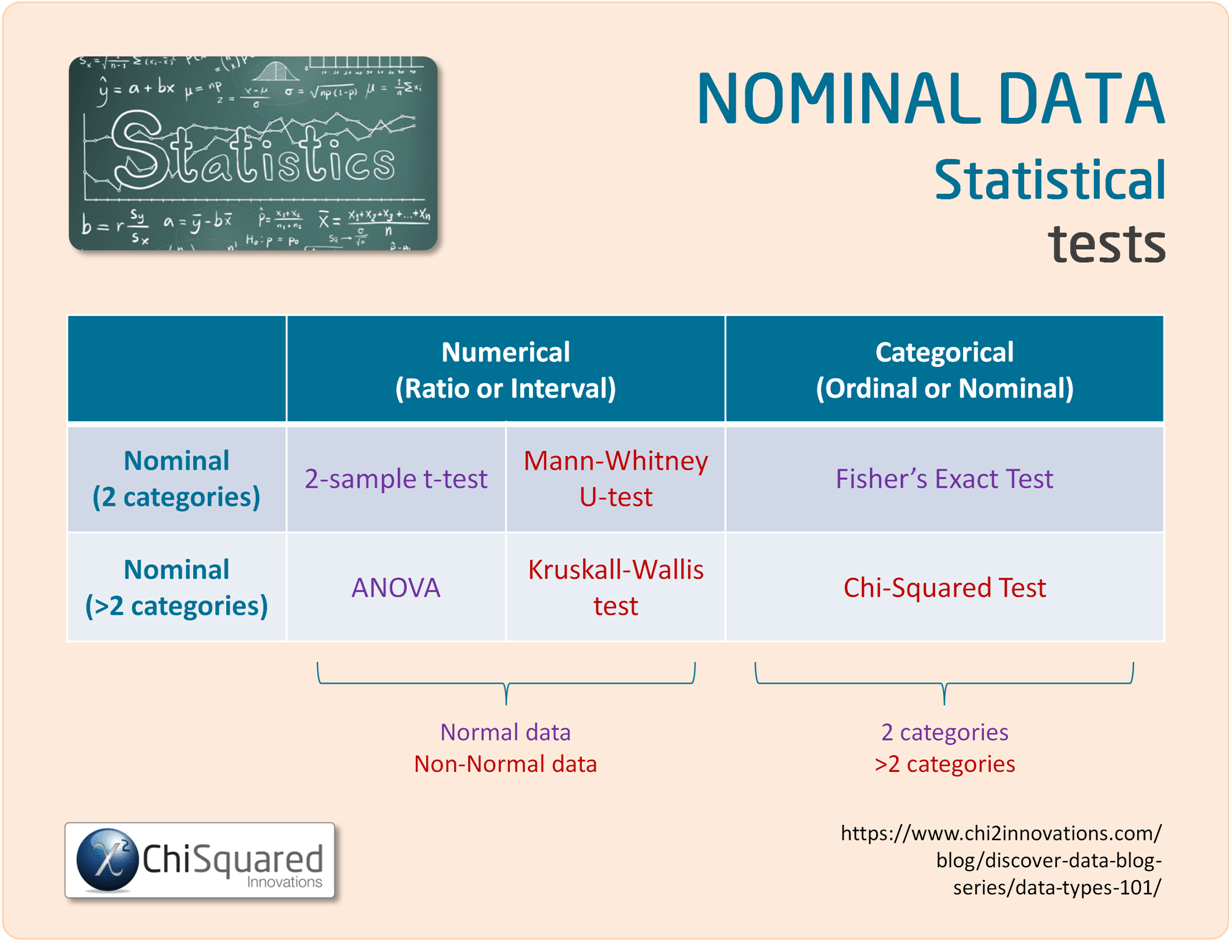
Ordinal vs Nominal Data - What's The Difference?
Ordinal data and Nominal data are both qualitative data, and the difference between them is that Nominal data can only be classified - arranged into classes or categories - whereas Ordinal data can be classified and ordered.
One of the assumptions of Ordinal data is that although the categories are ordered, they do not have equal intervals.

UNIQUE VIDEO COURSE
In less than 2 hours
your data can be:
Nominal Data: Summary
The basics of statistics, like data collection, data cleaning and data integrity aren't sexy, and as a result are often neglected, and that is also the case with data types.
In my experience, few people that have to do statistics as part of their research know and understand the statistical data types, and as a result struggle to get to grips with what they can and can't do with their data.
That's a shame, because if you know the 4 types of data in statistics you know:
In short, data types are a roadmap to doing your entire study properly.
They really are that important!
Hopefully, by now you have a good understanding of what Nominal data are, and what you can do with them.
Nominal Data are observed, not measured. They are unordered, non-equidistant and have no meaningful zero. Their categories are named, and you can group together data points that are the same and separate those that are different.
Nominal data are types of Qualitative data (also known as categorical data), and you cannot perform any mathematical operations on Nominal data.
Now that you know everything there is to know about Nominal data, you might also like to read this post's sister articles on quantitative data and qualitative data, Ordinal data, Interval data and Ratio data.
In the final posts we'll compare each of the 4 types of data and I'll also show you how to choose the correct statistical hypothesis test.
Do you have any questions about Nominal data? Is there something that I've missed out?
Let me know in the comments below - your feedback will help me to improve the post and make learning about data and statistics easier for everybody!
This post forms part of a series on the 4 types of data in statistics.
For more detail, choose from the options below:

